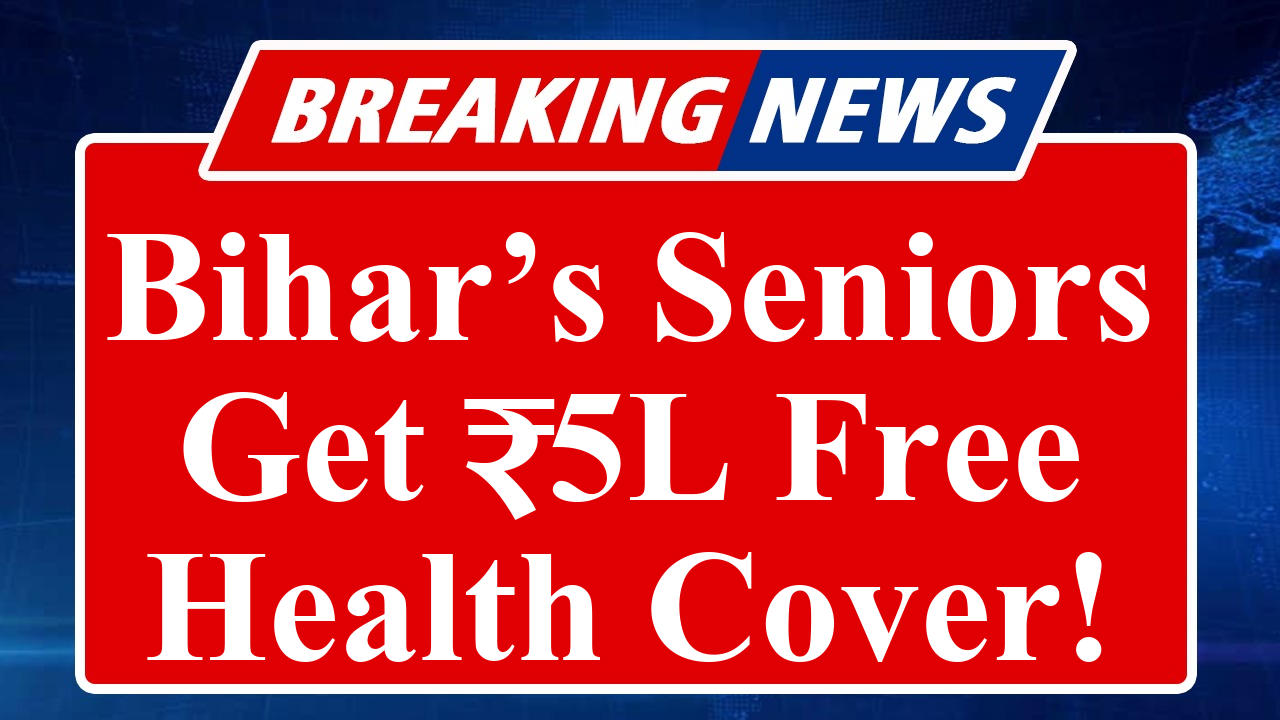Bihar has rolled out a groundbreaking health insurance scheme under Ayushman Bharat PM-JAY, offering ₹5 lakh coverage for seniors aged 70 and above, regardless of income. Announced on June 13, 2025, the initiative aims to ease medical expenses for the elderly, ensuring cashless treatment at empanelled hospitals. The move addresses rising healthcare costs, benefiting over 6 crore seniors across India, including Bihar’s aging population.
Bihar Bolsters Elderly Healthcare with New Insurance Scheme
On June 13, 2025, Bihar embraced a transformative step in elderly care by implementing the expanded Ayushman Bharat Pradhan Mantri Jan Arogya Yojana (AB PM-JAY), which now provides free health insurance of up to ₹5 lakh per family annually for all senior citizens aged 70 and above, irrespective of their financial status. This initiative, approved by the Union Cabinet in September 2024, marks a significant effort to address the healthcare challenges faced by India’s aging population, particularly in states like Bihar, where the elderly population is growing rapidly.
According to projections, India’s senior population is expected to reach 158.7 million by 2025, with Bihar contributing significantly to this demographic shift. The state’s elderly often face financial strain due to rising medical costs and limited access to quality healthcare. The new scheme aims to alleviate these burdens by covering surgeries, complex procedures, and hospitalisation expenses at empanelled hospitals, ensuring cashless treatment through the Ayushman Vaya Vandana Card.
Bihar’s integration of this scheme aligns with the state’s existing welfare programs, such as the Mukhyamantri Vridhjan Pension Yojna, which recently increased its monthly pension to ₹1,100 from July 2025. However, unlike the pension scheme, which targets specific economic groups, the health insurance initiative is universal for seniors above 70, making it a landmark move for inclusivity. In Bihar, where healthcare infrastructure in rural areas remains a challenge, this scheme is expected to enhance access to medical facilities for the elderly, particularly in districts with limited hospital networks.
The Insurance Regulatory and Development Authority of India (IRDAI) has further supported elderly healthcare by mandating that insurers cannot reject mediclaim applications from seniors with pre-existing conditions like diabetes, hypertension, or heart disease. Additionally, the waiting period for covering such conditions has been reduced from four to three years, enabling faster access to critical treatments. This is particularly relevant in Bihar, where chronic illnesses like cardiovascular diseases and diabetes are prevalent among the elderly, as per the Longitudinal Aging Study in India.
However, challenges remain. In Bihar, the scheme’s effectiveness depends on the expansion of empanelled hospitals, especially in rural areas, to ensure seniors can access cashless treatment without long queues or travel burdens. Experts suggest that while the ₹5 lakh cover is substantial, it may not suffice for specialised treatments required for age-related ailments, prompting some to recommend supplementing it with private health insurance or super top-up plans.
The state government has also been urged to raise awareness about the Ayushman Vaya Vandana Card, as many seniors in Bihar’s rural pockets may be unaware of the enrollment process. The scheme’s success will hinge on seamless implementation, including dedicated support channels for seniors, as mandated by the IRDAI, to address grievances and facilitate claims.
As of early 2025, over 14 lakh Ayushman Vaya Vandana cards have been issued nationwide, with Bihar actively contributing to this tally. The initiative not only reduces out-of-pocket expenses for families but also reinforces the government’s commitment to ensuring dignified healthcare for the elderly, a demographic often described as a “precious part of society” by Bihar Chief Minister Nitish Kumar.
Disclaimer: This article is based on information from government announcements, news reports, and publicly available data as of June 13, 2025. Readers are advised to verify details with official sources like the National Health Authority or the Ministry of Health and Family Welfare for enrollment and eligibility criteria.

